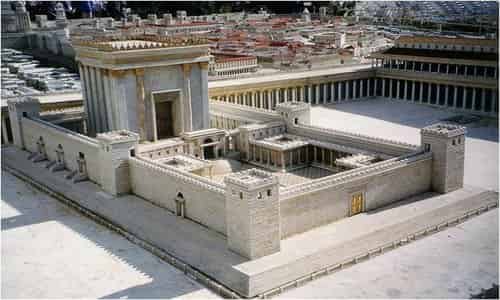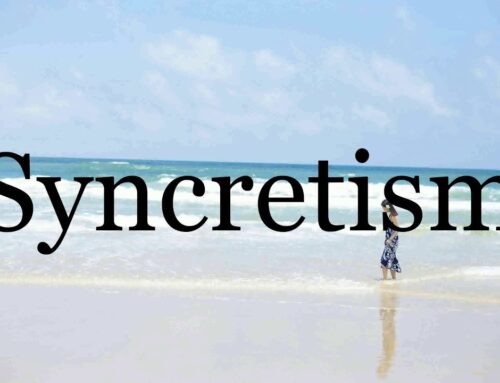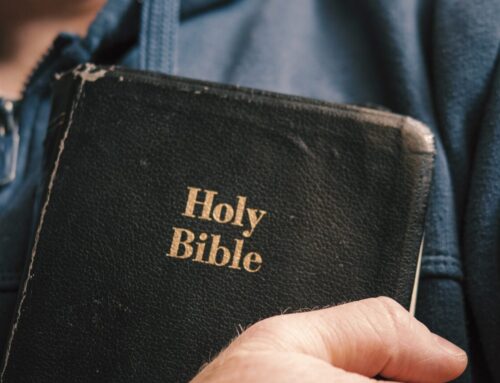Artists rendering of what the Third Temple could look like.
I know pastors who it can be discerned by their speech, their mentioning it repeatedly, that are annoyed when people ask them about the Third Temple in Jerusalem.
I’ve heard their voices and seen them behind the pulpit visibly, audibly irritated that people are asking about this, wondering about it.
And these pastors proclaim, rightly, that there is no need for a Third Temple as the Lord Jesus Christ is that Temple and no physical structure is needed.
That’s true, all well and good but their persistent denial and refusal to ever acknowledge that a physical Third Temple will be built in Jerusalem goes directly against what is in Scripture. They are refusing to address and speak of that which is clearly in God’s Word. A physical Third Temple will be built.
Nothing in the Word of God ought to be omitted, or added to.
A Third Temple has been in the works for many years. Over the past eleven plus years this place has been in existence I’ve included many articles about this. From breeding and finding the necessary red heifer, to finding the long-lost flower to create the specific color needed as commanded by God, to making the sacramental pieces to specifically be used in the Third Temple. Along with a growing number of Israeli MPs and people increasingly talking and writing about building the physical Third Temple. If a person would take some time going back through the archives here they would find some of these articles.
Pastors, preachers, and folks calling themselves Christians can continue to live in denial, in their vain illusionary places refusing to acknowledge matters — but a Third Temple is in the Bible! How can a pastor, a preacher, or a professed Christian ignore and deny, or always skirt around this Biblical FACT!?
The Antichrist STANDS PHYSICALLY IN THE THIRD TEMPLE and declares himself God! Search the Scriptures for this Biblical fact which is easy to find and can be clearly discerned. It is not symbolic but literal. Also, see the RELATED articles in the archives here on ACP following the news article below — ahh, and perhaps those pastors refusing this Biblical truth ought to find the place in the Word where it clearly says a physical Third Temple will be built, and take a few minutes to read the RELATED articles below.
It cannot be any clearer.
Yes, spot on that disciples of the Lord Jesus Christ do not need a physical temple, we do not need the physical Third Temple to be built in Jerusalem. We do have the Lord Jesus Christ as our Temple.
But go tell that to a Jew.
Or better yet, go to the Word of God and have the Lord reveal the clear truth that a Third Temple will be built, and in the Word, it explains why.
Who is anyone, ANYONE, to question God or His Word?
Woe to anyone who would dare do so. Even the most popular of pastors or so-thought devout professed Christians!
The physical Third Temple is coming.
Just as the end of the world as it has been known is.
Just as the Lord Jesus Christ is returning a Second Time.
Ken Pullen, A CROOKED PATH, Friday, June 10th, 2022
Kohanim Recreate Shavuot Service In Step To Reestablishing Third Temple (Video)
June 7, 2022
BY
Reprinted from Israel 365 News & Prophecy News Watch
The Temple rituals mandated for the holiday of Shavuoth were recreated on Monday in Mitzpeh Yericho in preparation for the prophesied building of the Third Temple.
Though carried out every year, this year took the ritual reenactment one step further, adding another practical element intended to pave the way for the Third Temple.
These reenactments are held before every holiday as a practical move towards preparing the Kohanim (priests) for performing the actual Temple service. The Shavuoth service includes two specially prepared loaves, a wine libation, the bikurim (first fruits), and a wave offering of two lambs. These were recreated by Kohanim in the Biblically mandated clothes, as usual.
But in addition (and for the first time), there was a recreation of the gifting of the first shearings to the Kohanim. This commandment is described in Deuteronomy as accompanying the bikurim:
You shall also give him the first fruits of your new grain and wine and oil and the first shearing of your sheep. Deuteronomy 18:4
Rabbi Hillel Weiss explained the significance of shearing in the reenactment.
“Shepherds sheared their sheep every year as a matter of course,” Rabbi Weiss explained. “Since the Priests who are constantly serving Hashem have no portion in the land or in the shearing, Hashem supplied them with all of their needs through their brothers. These gifts are not considered sanctified and can be used for any purpose, even sold to other non-Kohen people for the priest to earn a living.”
“People read the Bible and think the Temple was so holy because it was disconnected from the operations of the world. The opposite is true. The Temple connected the world to the Creator, allowing the world to operate properly. The world needs kohanim; to operate the Temple, connect us with God, and teach Torah. Built into the Torah laws pertaining to the Temple were mechanisms that allowed the Temple to operate properly. This included raising money for the sacrifices and the priests.”
“So many of the problems in the world today are because God has been taken out of the institutions that are in most need of Divine influence. If you have a government disconnected from the Torah, a president that is not limited or guided by the Torah, of course, society will become evil. The United Nations usurped the function of the Sanhedrin and is guided by anti-Biblical principles. Since they are unrepentant and see themselves as above Man and God, the world’s governments are on a path to destruction.”
“We are trying to help the world by reinstating these gifts to the Kohanim so that they can take their rightful place and so that the Temple, as an institution, will return to function as a light unto the nations.”
Shavuot is an annual Jewish holiday, one of the three Biblically mandated pilgrimage festivals when, in Temple times, Jews ascended to Jerusalem. After the Jews complete the mitzvah (Torah commandment), it is observed to ccounting seven seven complete weeks.
You must count fifty days until the day after the seventh week; then, you shall bring an offering of new grain to Hashem. Leviticus 23:16
When the Temple stood in Jerusalem, a barley harvest took place on the night after the first day of Passover ended, marking the first night of counting the seven-week Omer period. As Passover ended, Jews began counting 50 days until the holiday of Shavuot.
An agricultural festival, Shavuot, comes at the end of the winter during the grain harvest and is observed in the Temple by offering is observed in the Temple by an offering of two loaves of bread. Made from the choicest barley, ground and sifted twelve times before being baked. The leftovers of the sacrifice are kept by the priest and are listed as one of the twenty-four priestly gifts. The barley was allowed to become a sourdough used to bake two loaves for the holiday of Shavuoth.
All of the other grain offerings brought in the Temple were flat, pan bread, usually fried in oil. Even the Show Bread that was always present in the Temple, despite being quite large, was essentially matzah, unleavened bread.
The two unleavened loaves were brought as a thanksgiving “wave offering” along with two lambs as a central aspect of the national holiday. These two loaves were unusual in that they were prepared with natural leavening, whereas nearly all other grain offerings at the Temple were made without leavening. The two loaves, baked from a sourdough, were shaped in a special manner with squared ‘horns’ in the corners, resembling the altar.
These special loaves were recreated for the reenactment.
The organizers of the reenactment brought two especially small lambs since they were “waved” at the same time as the loaves, a difficult task made even more difficult if the lambs are larger. The lambs were not sacrificed and were only for demonstration.
The reenactment also included the ceremony of the bikurim or the “bringing of the first fruits.” The ceremonies were performed by Kohanim (men of the priestly caste) dressed in authentic garb as described in the Bible, led by Rabbi Baruch Kahane, who has played a prominent role in many of the Temple reenactments.
In the days of the First Temple, the first fruits of the annual harvest were brought to Jerusalem as an offering between the holidays of Shavuot (Festival of Weeks) and Sukkot (Festival of Booths). The fruits were brought in baskets, beautifully displayed, and given to the priests.
Thou shalt take of the first of all the fruit of the ground, which thou shalt bring in from thy land that Hashem thy God giveth thee; and thou shalt put it in a basket and shalt go unto the place which Hashem thy God shall choose to cause His name to dwell there. Deuteronomy 26:2
Bikurim are brought from the seven species which have a special significance to Israel: wheat, barley, grapes, figs, pomegranates, olive oil, and dates (honey).
A land of wheat and barley, and vines and fig-trees and pomegranates; a land of olive-trees and honey Deuteronomy 8:8
The fruits were given to the priests after the donor recited a confession, detailed in Deuteronomy 26:1-11, acknowledging God as the One who redeemed the Israelites from the Egyptian bondage and expressing gratitude to God for bringing them to the Promised Land.
This aspect of the holiday is highly exclusive, focusing only on Jews living in Israel. Only the first fruits grown entirely in the land of Israel are included in this mitzvah. Even first fruits grown by non-Jews inside the land of Israel are not considered bikurim. Upon presenting the first fruits to the Kohen in the Temple, the Jew recites an avowal from Deuteronomy, which begins with this self-identifying statement.
My father was a fugitive Aramean. He went down to Egypt with meager numbers and sojourned there; but there he became a great and very populous nation. Deuteronomy 26:5
Since this description excludes non-Jews, they would not make this statement even if they brought the first fruits. A prerequisite for bringing the Bikkurim is that the person who brings them is the legal property owner of the land on which the fruits were grown, for which reason, share-croppers and usurping occupants were not permitted to bring them.
I profess this day unto Hashem thy God that I am come unto the land which Hashem swore unto our fathers to give us.’” Deuteronomy 26:3
‘A wandering Aramean was my father, and he went down into Egypt, and sojourned there, few in number; and he became there a nation, great, mighty, and populous. Deuteronomy 26:5
And now, behold, I have brought the first of the fruit of the land, which Thou, O Hashem, hast given me.’ And thou shalt set it down before Hashem thy God, and worship before Hashem thy God. Deuteronomy 26:10
These verses were used explicitly to acknowledge God as the one who redeemed the Israelites from the Egyptian bondage and to express gratitude to God for bringing them to the Promised Land.
RELATED:
Practice Run For Third Temple – Reenactment Of Several Temple Ceremonies Planned
NEW SCHOOL IN JUDEAN HILLS TRAINS PRIESTS FOR THIRD TEMPLE
Once Lost Biblical Blue Dye Returns In Preparation For 3rd Temple
ELECTIONS: POLLS SHOW PRO-3RD TEMPLE POLITICIANS BECOMING LAWMAKERS
Red Heifer Update From The Temple Mount Institute







Leave a Reply, please --- thank you.